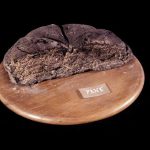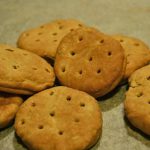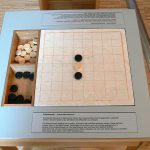In the Latium region to this day, one of the typical Christmas cakes is the so-called yellow bread – pangiallo. Its roots go back to the era of the Roman Empire.
Back then, pieces of that golden dough, dipped in eggs – which in the oven turned into a golden, crunchy coating – were distributed during the winter solstice. It was supposed to herald the quick return of the sun. In Tuscany today pangiallo is baked from yellow corn flour. As in antiquity, it is kneaded with raisins and dried figs for a sweet treat.
Here is an example recipe:
- 5 g fresh yeast or 4 g dry yeast
- 50 g of plain flour
- 50 g plain white flour
- 35 g powdered sugar
- 100 g warm water
- 20 g of olive oil
- 2 g of sea salt
- 250 g seedless raisins
- 100 g of dried quartered figs
- 120 g of whole or blanched almonds
- 20 g of candied crust
- 8 g of a mixture of cinnamon, coriander, black pepper, nutmeg, cardamom
Dissolve the sugar in the water. Create an advancement with a portion of the water mixed with sugar, yeast, and about 25 g of flour. Leave it for a while to swell. Add the rest of the flour to a bigger bowl. Add the preferment, any remaining sugar water, olive oil and salt. Shape the dough by adding more water than needed, turn the dough over with a more oiled surface and knead until smooth. Wait 10 minutes and add spices, nuts, raisins, and zest. Knead well/mix the entire contents of the bowl. Cover the dish and leave for 6 hours. Shape as desired – e.g. a pair of round pieces. Place both pieces of dough on a baking tray and mash them into flat disks about 2.5 cm high. If the loaves stick too much, sprinkle flour on your hands and shape. Cover the loaves for another 4-6 hours at a neutral temperature. Then preheat the oven to 180°C. Brush the bread with a mixture of saffron, warm water, egg yolks, flour and sugar. Bake for about 30 minutes, until the bread is coloured. Leave on the tray for 20 minutes and let it cool down.







